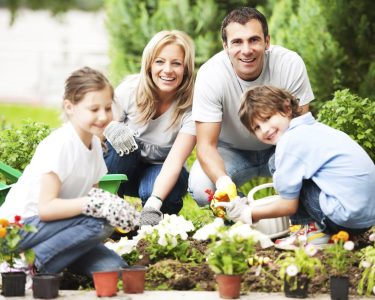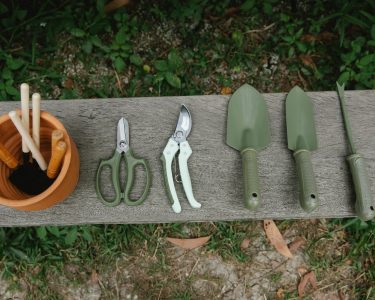Are you tired of looking at a messy and weed-filled garden? Do you want to transform it into a beautiful oasis that attracts bees, butterflies, and other pollinators? Well, look no further! In this blog post, we will share some simple hacks that can help turn your garden from weeds to wonders. From choosing the best plants for your space to getting rid of pesky weeds and attracting beneficial insects, we’ve got you covered. So grab your gardening gloves and let’s get started on creating the garden of your dreams!
The best plants for your garden
Choosing the right plants is crucial to creating a thriving and visually stunning garden. The first step is to consider your climate zone and soil type. Some plants thrive in hot, dry conditions while others prefer cool, wet environments. Additionally, some species require well-draining soil while others do best in rich, loamy earth.
When selecting plants for your garden, it’s important to also think about their purpose. Do you want flowers that attract pollinators or edible herbs and vegetables? Maybe you’re looking for foliage that adds texture and interest to your space.
Consider the size of each plant as well. Be mindful of how much space they need both above and below ground so they don’t overcrowd other neighboring plants or become root-bound.
Take into account maintenance requirements such as watering needs and pruning frequency. Choose varieties that fit within your schedule and skill level so you can enjoy a beautiful garden without feeling overwhelmed by its upkeep.
How to get rid of weeds
Weeds are the bane of any gardener’s existence. These pesky plants can quickly take over your garden and choke out the flowers, fruits, and vegetables you’ve worked hard to cultivate. Fortunately, there are several ways to get rid of weeds without resorting to harmful chemicals.
One of the simplest methods is hand weeding. This involves pulling up weeds by their roots using a hoe or digging tool. It’s important to pull out as much of the root system as possible so that they don’t grow back.
Another effective way is mulching your garden beds with organic material like straw or leaves. Mulch helps suppress weed growth by blocking sunlight from reaching them while retaining moisture in the soil for your plants’ benefit.
You can also try smothering weeds with newspaper or cardboard covered in a layer of compost or mulch on top. The paper blocks light from reaching the weed seeds while adding nutrients to your soil as it decomposes.
For larger areas infested with weeds, consider using landscape fabric or black plastic sheeting instead of conventional herbicides These materials block all sunlight access which will kill existing vegetation when used correctly
Getting rid of weeds requires some effort but isn’t impossible without using dangerous chemicals!
How to make your own compost
Making your own compost is not only a great way to reduce waste and save money, but it’s also an effective way to improve the quality of your soil. Composting allows you to recycle organic matter like food scraps, leaves, grass clippings, and more into a nutrient-rich fertilizer for your garden.
To get started with making your compost, all you need is a bin or container to hold your materials. You can purchase a pre-made composter or build one yourself using wood pallets or wire mesh.
Next, start collecting organic waste from your kitchen and yard such as fruit peels, coffee grounds, eggshells and dead plant material. It’s important that the materials are broken down into small pieces before adding them to the bin.
Layering greens (kitchen scraps) with browns (dead leaves) helps create balance in the pile which will help speed up decomposition. Adding water regularly will keep the pile moist enough for microorganisms to thrive while turning occasionally will allow oxygen flow through helping break down ingredients faster.
Within six months to two years depending on factors such as temperature and moisture levels in addition size of particles added; this mixture transforms into dark-colored humus known as “black gold”!
How to attract bees and other pollinators
One of the key components of a thriving garden is attracting pollinators, especially bees. Bees are essential for pollinating plants and ensuring their growth and reproduction. Here are some tips on how to attract bees and other pollinators to your garden.
Firstly, choose plants that bees love. Some great options include lavender, sunflowers, wildflowers, and herbs such as mint or rosemary. These plants have bright colors and strong fragrances that attract bees.
Secondly, provide water sources for the bees. A simple bird bath or shallow dish filled with water can be enough for them to quench their thirst while they work in your garden.
Thirdly, avoid using pesticides or chemicals in your garden as this can harm not only the bees but also other beneficial insects like butterflies.
Consider providing shelter for solitary bee species by installing bee houses in your yard. These small structures create nesting sites for these important pollinators.
By taking these steps to attract pollinators like bees into your garden space you’ll benefit from improved plant health which will lead to higher yields of fruits & vegetables along with a more colorful landscape filled with beautiful flowers!
How to deal with pests
Dealing with pests is a common problem faced by every gardener. These pesky critters can damage your plants and ruin all the hard work you’ve put into your garden. Fortunately, there are ways to deal with them without using harmful chemicals.
One effective way to control pests is through companion planting. This involves planting certain herbs and flowers that naturally repel insects and other pests. For example, marigolds emit a strong scent that deters whiteflies and nematodes, while basil keeps mosquitoes at bay.
Another method is to use organic pesticides made from natural ingredients such as garlic or neem oil. These are safe for both plants and humans, making them an eco-friendly option for pest control.
You can also set up physical barriers like netting or row covers to prevent pests from accessing your plants. This works well against flying insects like moths or butterflies that lay their eggs on leaves.
Regular maintenance of your garden is essential in preventing pest infestations before they start. Clear away any debris or dead plant material where pests might hide, water regularly but not excessively since overwatering attracts some types of insects like aphids.
By following these simple tips, you can keep your garden healthy and beautiful without harming the environment or yourself!
Conclusion
Transforming your garden from a weed-filled mess to a lush, thriving wonderland may seem like an overwhelming task. But by following the simple hacks outlined here, you can make it a reality. Start by choosing the best plants for your space and getting rid of weeds. Then, create your own compost and attract pollinators to ensure healthy growth. Deal with pests in an environmentally friendly way.
Remember that gardening is a journey – there will be setbacks and challenges along the way. But don’t let these deter you! By implementing these tips and tricks, you’ll be well on your way to transforming your garden into something truly special. So roll up those sleeves, grab some gloves and get ready to enjoy all that nature has to offer right in your backyard!



